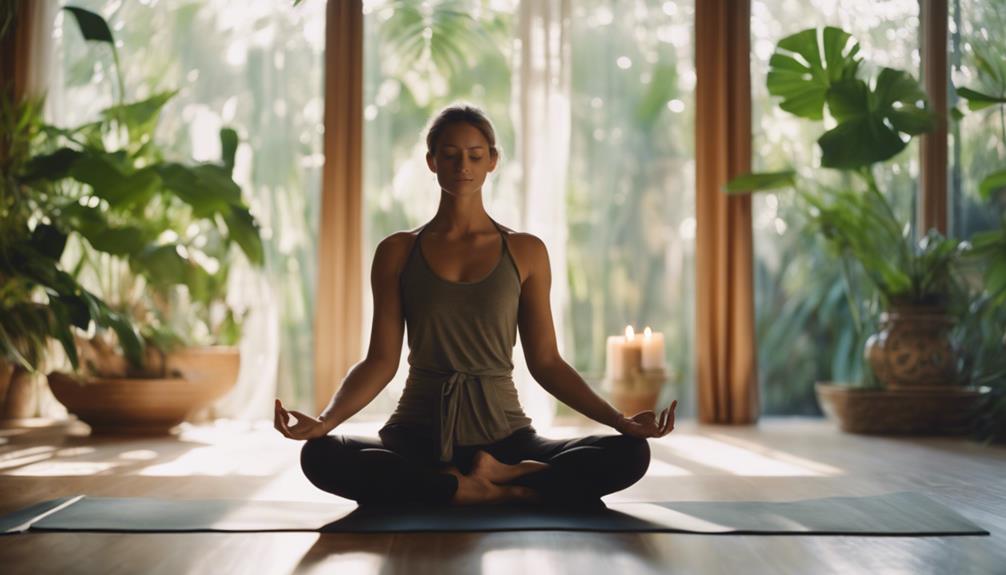What Is Yin And Yang Yoga

Yin and Yang Yoga is a unique practice that merges two distinct styles of yoga, offering practitioners a comprehensive approach to physical and mental well-being. This blog post will explore the fundamentals of Yin and Yang Yoga, its benefits, and how to incorporate it into your routine. By the end of this article, you will have a deeper understanding of what Yin and Yang Yoga entails and how it can enhance your overall wellness.
Defining Yin and Yang: The Philosophical Roots
The concept of Yin and Yang originates from ancient Chinese philosophy, representing the dual nature of reality. Yin embodies qualities such as darkness, femininity, and receptiveness, while Yang symbolizes light, masculinity, and activity. In the context of yoga, these principles are reflected in the balance between passive and active practices. Yin Yoga focuses on deep stretching and long-held postures to cultivate stillness and introspection, whereas Yang Yoga emphasizes dynamic movements and strength-building. Understanding these foundational concepts is crucial for anyone looking to delve into Yin and Yang Yoga.
The Benefits of Yin and Yang Yoga
Practicing Yin and Yang Yoga offers a myriad of benefits for both the body and mind. Yin Yoga helps enhance flexibility, release tension, and promote relaxation by targeting the connective tissues, such as ligaments and fascia. In contrast, Yang Yoga boosts strength, endurance, and cardiovascular health through dynamic movements and flowing sequences. Together, these two styles create a holistic practice that fosters physical resilience and mental clarity. By integrating both Yin and Yang elements, practitioners can experience a profound sense of balance, making it an ideal practice for those seeking harmony in their lives.
How to Practice Yin and Yang Yoga
Incorporating Yin and Yang Yoga into your routine can be both simple and rewarding. A typical session may begin with a Yang practice, focusing on flowing sequences like Sun Salutations or Vinyasa to warm up the body. After building energy and strength, transitioning into Yin poses, such as seated forward bends or butterfly stretches, allows practitioners to find stillness and release deeper layers of tension. Aim for a balanced approach where the intensity of Yang is countered by the restorative qualities of Yin. This method not only enhances the benefits of each style but also cultivates a deeper connection to your body and breath.
Yin and Yang Yoga Poses to Get Started
To effectively practice Yin and Yang Yoga, it’s essential to familiarize yourself with specific poses that embody both styles. For Yang Yoga, consider incorporating poses like Warrior I, Crescent Lunge, and Downward Dog, which build strength and flexibility. On the Yin side, poses such as Dragon Pose, Sphinx, and Supported Bridge are excellent choices for promoting deep stretching and relaxation. By choosing poses that resonate with your body and mind, you can create a personalized Yin and Yang Yoga routine that suits your needs.
Creating a Yin and Yang Yoga Routine
Crafting a balanced Yin and Yang Yoga routine involves thoughtful planning and consideration of your goals. Begin by determining how much time you can dedicate to your practice. A typical session may last anywhere from 30 minutes to two hours. Start with 20 minutes of Yang Yoga to energize your body, followed by 20-30 minutes of Yin Yoga to promote relaxation. As you become more comfortable with the transitions between styles, you can adjust the time spent on each segment according to your personal preferences. Consistency is key, so aim to practice at least twice a week to experience the full benefits of Yin and Yang Yoga.
Tips for Enhancing Your Yin and Yang Yoga Practice
To maximize the benefits of your Yin and Yang Yoga practice, consider incorporating mindfulness and breath awareness into your sessions. Focusing on your breath not only enhances relaxation but also helps you remain present during your practice. Additionally, using props such as blocks, bolsters, and straps can facilitate deeper stretches and support your body in various poses. Don’t hesitate to explore different styles of Yin and Yang Yoga, as each teacher may offer a unique perspective that resonates with you. Lastly, remember to listen to your body and honor its limitations, ensuring that your practice remains a source of joy and nourishment.
Finding a Community for Yin and Yang Yoga
Joining a community of Yin and Yang Yoga practitioners can significantly enhance your experience and motivation. Look for local classes, workshops, or online courses that focus on this hybrid practice. Engaging with experienced instructors and fellow practitioners can provide valuable insights and support as you navigate your journey. Many online platforms also offer virtual classes, allowing you to connect with a global community and access diverse teaching styles. Being part of a supportive group fosters accountability and encourages growth, making your Yin and Yang Yoga practice even more fulfilling.
Conclusion: Embracing the Harmony of Yin and Yang Yoga
Yin and Yang Yoga is a beautiful practice that encourages balance and harmony in both body and mind. By exploring the principles of Yin and Yang, incorporating specific poses, and cultivating mindfulness, you can create a holistic routine that supports your overall well-being. Whether you are new to yoga or a seasoned practitioner, embracing the dual nature of Yin and Yang Yoga can lead to profound transformations in your physical health and emotional resilience. Start your journey today, and discover the power of balance in your life through the practice of Yin and Yang Yoga.How Thick Yoga MatIs Yoga Go App LegitHow Much Yoga Should I Do A Week